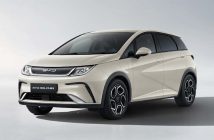+++ The Italians from Turin opened their Facebook page to put the world on alert that “a new era begins with ALFA ROMEO ” and they did so using taillights that look like they come straight from the Tonale. Or do they? Perhaps the new electric B-segment SUV that Alfa Romeo will introduce next year will get Tonale taillights. Another guess is that engineers have created an enhanced Tonale variant with more than 300 horsepower. So what if there’s a Quadrifoglio PHEV headed to market, marking the first time the go-fast division would have put 4 leaves on a hybrid powertrain? CEO Jean-Philippe Imparato said that after the Tonale launch, “we have one big product event every year for 5 years”. This year was the 33 Stradale, next year comes the B-segment SUV and in 2025 “a full EV super-performing car”. After that, every Alfa Romeo will be battery-electric and Quadrifoglio trims make the jump. Imparato said there’d only be a Quadrifoglio variant of the current version if engineers could unlock “the highest level of performance”. A four-leafed Tonale could break the seal on the future of performance Alfas, and be among the department’s last ICE-powered hurrahs. All shots in the dark, though. Now that the tease campaign has begun, the next clue won’t be far away. +++
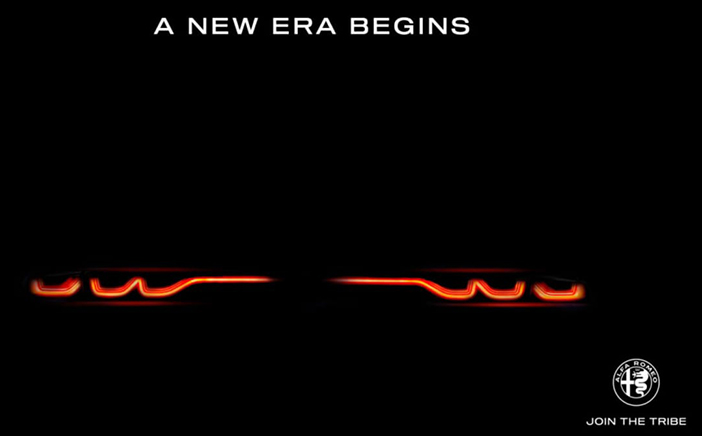
+++ As EV makers in CHINA wage an intense price war to prop up slowing demand, local brands with strong hybrid lineups are emerging as winners, attracting consumers with vehicles with long range that can cost less than gasoline cars. The emerging trend may provide a glimmer of hope for global automakers such as Toyota and Honda who are pursuing “multi-pronged” electrification strategies, as electric vehicle (EV) sales lose momentum in Europe and the U.S., partly because of high auto financing costs. One-third of total vehicle sales by Toyota, the world’s top-selling automaker, are already hybrids and the company reported a 34% surge in hybrid sales in the 6 months to end-September, outpacing 9% growth in overall revenue. Experts warn that foreign brands now face a growing threat from Chinese rivals that have conquered the domestic hybrid market and are looking overseas, emboldened by their strength as the world’s lowest-cost EV producer after heavy investment in supply chains. In the United States, most hybrid powertrains sell at a $1.500 to $2.000 premium to combustion models, but in China, some hybrids are offered at a slight discount to gasoline models and can be as much as 23% cheaper than pure EVs. That price advantage is driving Chinese consumers to hybrid models, which work almost like pure EVs when they are used for short daily commutes, consuming little gasoline, analysts said. “People are increasingly accepting that a car can be equipped with both an electric motor and a gasoline engine, as they are highly complementary”, said Xu Min, a professor at Shanghai Jiao Tong University’s Institute of Intelligent Vehicle. “Wherever the gasoline engine is low in efficiency, we can make up for it with the electric motor”. 2 types of hybrids, plug-in hybrid (PHEV) and extended-range hybrid (EREV), are enjoying strong demand, with their combined shipments surging 85% and outpacing a 14% growth in pure electric car sales this year, industry data showed. The popularity of these hybrids is so strong that the segment is now half as big as the pure EV market and accounts for 12% of total passenger vehicle sales, according to data from China Association of Automobile Manufacturers (CAAM). Li Auto, the most popular extended-range hybrid seller in China, has thousands of customers waiting for delivery of its new large SUVs, a stark contrast with many other brands grappling with an unsold inventory buildup. “The extended-range hybrids are the best option for Chinese drivers who want … a solution to driving range anxiety, better fuel efficiency, smarter driving features and lower prices”, said Yale Zhang, managing director at the consultancy Automotive Foresight. In the PHEV market, BYD has cemented its position as the most dominant player, with eight of the 10 top-selling plug-in hybrid cars in China among its offerings. A PHEV can be driven directly by the electric motor or the gasoline engine. An EREV has a larger battery pack and runs on electricity only, with its gasoline engine serving as a power bank to recharge the batteries when they run low. The growing popularity of PHEVs and EREVs from Chinese firms, which dominated the top 10 best-selling EREV or PHEV models, have not only affected sales of gasoline cars but also gasoline hybrid vehicles (HEV), a segment Toyota pioneered with the Prius in late 1990s. Sales of HEVs in China, which Toyota still dominates with 4 top-selling models, tumbled 15%, while gasoline car sales dropped 11%, underscoring potential challenges facing foreign automakers. HEVs use gasoline for the main powertrain and come with a relatively small battery pack that is recharged during braking and used for auxiliary power. The sales slump for that type in China is partly a result of from government policy, which favors battery-driven hybrids by offering tax cuts for EVs, PHEVs and EREVs. A foreign automaker was the first to crack the EREV market in China, only to cede it to local rivals: in 2017, General Motors launched the Buick Velite 5 as the first extended-range hybrid in China, 2 years before Li Auto started volume production. But it was a failed trial, with sales of just over 4.000 units and GM in 2020 deleted the Velite 5 from the Buick line-up. By contrast, Li Auto sold 244.225 EREVs in the first 9 months of 2023. The struggle of the likes of GM and Toyota is a stark reminder of growing threats posed by Chinese rivals now looking to export markets for growth. BYD is expanding PHEV sales overseas, offering Han, Qin and Song lineups in Latin America, which has less charging infrastructure. Stellantis is investing $1.6 billion in Leapmotor and is interested in bringing the Chinese partner’s EREV hybrids to Europe, according to people with knowledge of the matter. Stellantis told it does not exclude the possibility of cooperation with Leapmotor on new energy technology products. Xu at Jiao Tong University, however, noted that the difference in driver demands across markets could affect demand for Chinese cars. In North America, for example, consumers would look for cars with bigger horsepower to tow trailers, enabling a bigger popularity for HEVs. Still some are skeptical of the HEV’s longer-term future. “Conventional hybrid (HEV) is breathing life into a dying patient: the gasoline engine”, said Bill Russo, CEO of Shanghai-based advisory firm Automobility. +++
+++ Elon Musk’s concept of an all-electric, stainless steel truck is one that you might say belongs … well, back to the future. Taking a cue from that movie’s biggest star (John DeLorean’s extreme vision of a stainless-steel-bodied sports car) Musk 3-plus years ago shocked the industry when he announced that Tesla would build a CYBERTRUCK that would accelerate faster than a 911 and look nothing like a Ford F-150. And it would be built of DeLorean-esque stainless steel. The Musk plan, like many Musk plans, has yet to come to fruition.
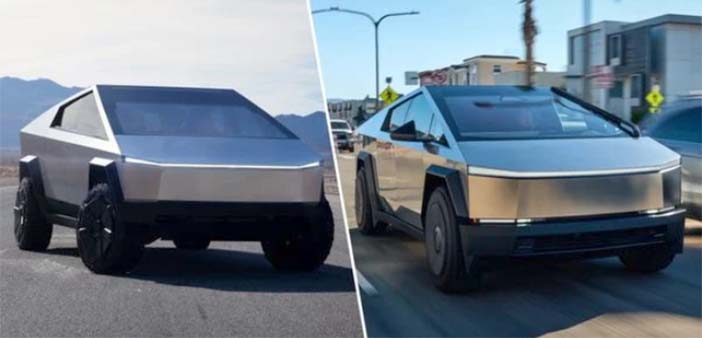
Veteran auto writer Jack Ewing details the effort to produce the Cybertruck, with a focus on the use of stainless steel in an “exoskeleton” vehicle as “another example of Musk’s penchant for pushing technological boundaries to the brink of disaster”. Ewing discusses with experts the challenges of working with the material; challenges, he writes, that may “help explain why Tesla is 2 years behind schedule in manufacturing the Cybertruck, which the company plans to produce at its factory in Austin, Texas”. The story quotes Raj Rajkumar, a professor of engineering at Carnegie Mellon University, on Musk’s go-my-own-way approach: “Tesla thinks they can solve any problem and don’t have to learn from anyone else. And then they get stuck in a corner”. Meanwhile, Tesla’s been lapped by competitors whose electric trucks were announced later but went on sale sooner. Citing the high demand for EV trucks, Ewing notes, “Ford stopped taking reservations for its F-150 Lightning, a battery-powered version of the best-selling vehicle, because it can’t make the vehicles fast enough. Rivian, a newer electric vehicle company, is also struggling to produce enough of its pickup, the R1T, to meet demand”.
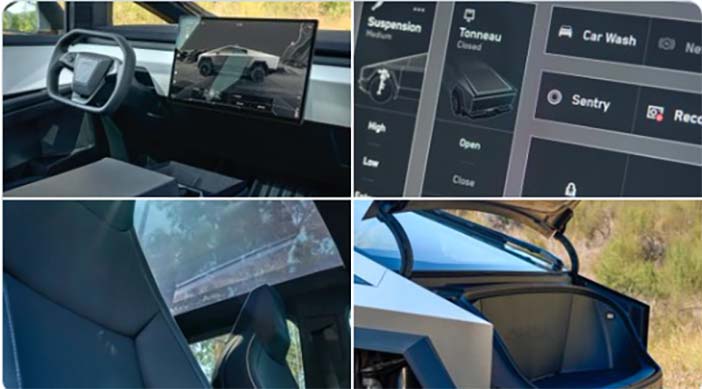
But it’s stainless steel that most intrigues him. Ewing explains that the cost of the material exceeds conventional steel “because it contains chromium and often other ingredients, like nickel and molybdenum, that are in high demand. Stainless steel’s tendency to spring back to its original shape means it cannot be stamped into fenders and other parts as easily as the more pliable steel used by most automakers. It also requires special welding techniques”. In other words, you can ignore Musk’s initial claim of a $40.000 truck: that’s not going to happen. The story takes a dive into design and mass-production questions, noting the Cybertruck body “has none of the curves typical of most vehicles, instead consisting of flat steel panels that experts say are probably cut with lasers and then welded together, eliminating the need for powerful stamping machines”. Ewing also speculates about safety. “The steel used in most cars is designed to crumple in a crash, absorbing energy and protecting passengers”, he writes. “Stainless steel does not crumple as easily, exposing passengers to more of the force from impact”. Summing up, he writes: “If nothing else, the Cybertruck will stand out in a crowded field”. But when? It’s now looking like 2024 before the truck gets produced in any real numbers. +++
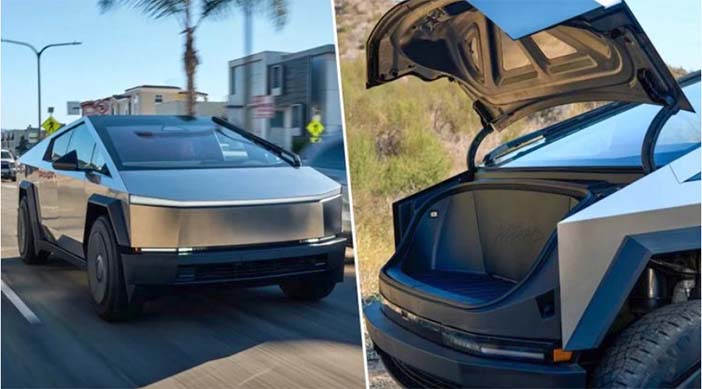
+++ Vehicle inventory, vehicle pricing and the supply chain are finally showing improvement. Vehicle quality, on the other hand, is still going the wrong way. That’s the takeaway from the 2023 J.D. Power INITIAL QUALITY STUDY that found overall problems exceeded last year’s record high. The study surveyed owners of 2022-model-year vehicles to assess the average rate of problems per 100 vehicles (PP100) during the first 90 days of ownership. The average figure for the 32 ranked manufacturers in 2020 was about 166 problems per 100 vehicles. In the 2021 IQS, that dropped to an average of 162. For 2022, the average jumped to 180 problems. For 2023, the PP100 is up to an industry average of 192; an increase of 30 problems per 100 vehicles in just 2 years. Let’s get to the good news first: Dodge reclaimed the crown of having the lowest number of problems per 100 vehicles at 140. Buick won last year with 139 PP100, falling to third this year. Dodge was the first American automaker to top the IQS in 2021. Its return as the least problematic gives parent company Stellantis 3 wins in 4 years after Ram was crowned in 2021. It also gives U.S. brands a 4-peat after Buick topped the chart in 2022 by having owners report the fewest problems. This year’s top-10 is Dodge, Ram, Alfa Romeo, Buick, Chevrolet, GMC, Porsche, Cadillac, Kia and Lexus. Stellantis gathered a few feathers for its cap, in fact. Maserati showed the largest improvement year-on-year, followed by Alfa Romeo, and Alfa Romeo posted the lowest PP100 among the premium class, beating Porsche and Cadillac. Alfa Romeo has been vocal about working to improve quality, mentioning Lexus as a target. Last year the Japanese brand finished 6th, the Italians finished near the bottom, between Jaguar and Mitsubishi. This year Alfa jumped to third, Lexus dropped to 10th. Ram was the third-best on the list of improvers from 2022 to 2023. The individual model with the lowest PP100 is the Nissan Maxima. Now for the troublesome bits. In the words of Frank Hanley, senior director of auto benchmarking at J.D. Power, “The industry is at a major crossroad and the path each manufacturer chooses is paramount for its future. From persistent problems carrying over from years past to an increase in new types of problems, today’s new vehicles are more complex, offering new and exciting technology, but not always satisfying owners”. To set the table, the IQS asked nearly 94.000 owners and lessees of 2022MY vehicles (10.000 more respondents than last year) a battery of 223 questions, those questions organized into 9 vehicle categories: infotainment; features, controls and displays; exterior; driving assistance; interior; powertrain; seats; driving experience; and climate. Infotainment continued to be biggest hassle, but problems with features were the big news this year, 1 of the unexpected findings that some of the features are simple. Respondents mentioned door handles as an issue, for instance, 7 out of 10 vehicles with ornery door handles being EVs. Lane departure warning and forward collision/automatic emergency braking systems got called out repeatedly. Drivers of vehicles with Google’s Android Automotive Operating System dinged the software enough to create a 25.1 PP100 difference between cars with the software and cars without. And difficulties with wireless charging sound like old issues with Bluetooth connections, the charging pads either not working, working sporadically, or working to well and overheating the phone. Owners are a tiny bit happier with manufacturer smartphone apps. So that’s good. Among EV-only makers Tesla, Lucid, Polestar and Rivian, none could be officially ranked because they don’t give J.D. Power access to owners in states that require manufacturer consent. With that caveat, survey answers from respondents who own these makes would have put these brands at the bottom of the list. Tesla’s 240 PP100 from 2022 worsened to 257 PP100 this year. Polestar improved, but scored 313 PP100, behind Rivian with 282 PP100 but better than Lucid at 340 PP100. +++
+++ NEW YORK City’s taxi fleet has always included a number of makes, but 2 cars dominated the 20th century: the Checker Cab that lasted from the 1920s to the 1970s, followed by the Ford Crown Victoria that picked up from the Checker and remained a Big Apple icon until after 2010. Ford produced the last Crown Victoria in September 2011. NYC Taxi and Limousine Commission (TLC) rules dictate a cab can’t be more than 7 years old, so 2019 should have seen the last Crown Vic cab roll down a Manhattan Street. But 2 Crown Victorias are still making the rounds, having dodged their appointments with the axe man: Ravinder Sharma bought his 2011 Crown Vic in 2012 and has put more than 550.000 miles on it, Haroon Abdullah bought his Crown Vic in 2013 and covered 491.000 miles. Both men love their cars despite the thirst of the 4.6-liter V8; when asked about fuel economy, Sharma gave an answer that belongs on a T-shirt: “I don’t think about the gas. I’m 64. I raised my children. I just drive”. Both men took advantage of the TLC’s grace period to run old cabs during Covid. Both men have kept their taxis registered with the state authorities that oversee all vehicles in New York, but both have gone on the lam, relatively speaking, from the required TLC inspections for the taxi fleet. If they showed up for the TLC test, the commission would confiscate their meters and levy fines. Both men have the same reason for continuing to drive their contraband cars: Financial hardship. And both men have been summoned for administrative hearings at the TLC to explain their actions, and, likely, have their taxi meters shut down and pay fines. Those hearings don’t need to rob the Crown Vic of the ending it could have had, though. Before the TLC made the seven-year rule, the last Checker Cab quit doing NYC taxi work in 1999 at 21 years old. The owner, Earl Johnson, spent his final day on the job giving rides to journalists who wanted the story. And since the press wasn’t paying fares, he wasn’t a taxi that day. There’s no reason Sharma and Abdullah couldn’t make a little change to pay those fines by offering tours in their two yellow dinosaurs, perhaps. Head over to the NYT for the whole story about the end of the road. +++
+++ PARIS aims to drive large SUVs out of its center by hiking parking fees for heavy cars in the French capital, and it plans a citizens’ vote on the proposal early next year. After banning rental scooters in September in the wake of a citizen’s vote, Paris will hold a local referendum on February 4 about “the place of SUVs in the capital”. Since SUVs can be hard to distinguish from other models, City Hall wants to introduce higher parking fees for thermal engine cars weighing over 1.6 ton and for electric vehicles over 2 ton. To determine a car’s weight, scanners will read its license plate, which links to its model and weight. “We need to reduce the number and the size of cars in the city, that is why we will submit to a vote the question of how much space there should be for this type of vehicle in Paris”, deputy mayor David Belliard, an ecologist, told. Under mayor Anne Hidalgo, Paris has for years raised pressure on drivers by increasing parking costs and gradually banning diesel vehicles, while boosting the bicycle lane network in the congested capital. “The SUV vote is to tell all those who continue to use their private cars because they’re the richest: No! In a few years, in a few months, they won’t be welcome in Paris with this type of behavior”, Belliard said. He said Paris also wanted car manufacturers to stop building this type of vehicle because they were too expensive, too polluting and unsuitable for cramped city centers. Car drivers’ association president Philippe Noziere said that if cars were heavier and bulkier than before, it is for reasons of safety and comfort. “Manufacturers have made huge efforts with these vehicles. Of course, this has translated into extra weight”, he said. Paris resident Henri Duret had little sympathy for SUVs. “They are a symbol of another era … a symbol of crushing others. Because it’s a heavier car, it consumes more fuel and therefore pollutes more. So I think it’s normal to tax them more”, he said. +++
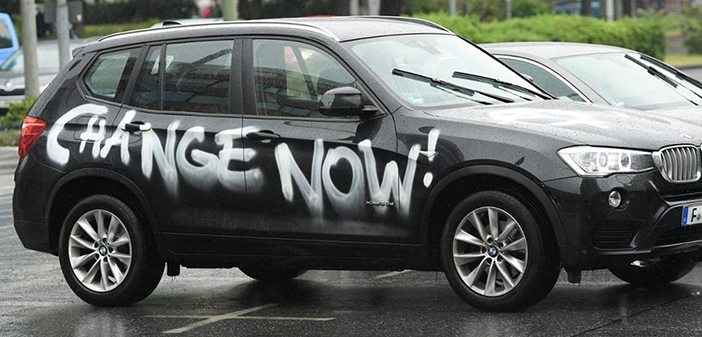
+++ A court in Sweden ruled on Monday the country’s transport authority must find a way to get license plates to TESLA that are being blocked by postal workers. The decision comes hours after the U.S. electric car maker sued the agency and state-run PostNord because postal workers had stopped delivering plates for its new cars. PostNord workers on November 20 joined industrial action aimed at forcing Tesla to sign a collective bargain agreement for mechanics in Sweden, and the transport agency refused to deliver the plates by other means, saying it was contractually bound to use PostNord. However, Norrkoping district court ruled the agency must get the plates to Tesla within 7 days or pay a fine of 1 million Swedish crowns ($95,000). “It is correct that a decision has been made, siding with Tesla’s claim”, Johannes Ericsson, Tesla’s lawyer, told. The ruling is the latest twist in a battle between Tesla and labor groups in Sweden. Union IF Metall put mechanics on strike on October 27, refusing to service Tesla’s cars because the company would not accept collective bargaining. Members of other unions, including dockworkers, electricians and cleaners have since taken action in sympathy. Tesla has a policy of not signing collective bargaining agreements and says its employees have as good, or better, terms than those demanded by IF Metall. The union says it is vital to the Swedish labor market model that all companies have collective agreements. Tesla, in its court filing, called the transport agency’s decision not to let it pick up the license plates “a unique attack on a company operating in Sweden”. Seko, the union that organized the PostNord workers, told an easy solution for Tesla was to sign the collective bargaining agreement with IF Metall. “We see this as a sign that they have not been able to circumvent our sympathy notice”, its spokesperson said. +++

